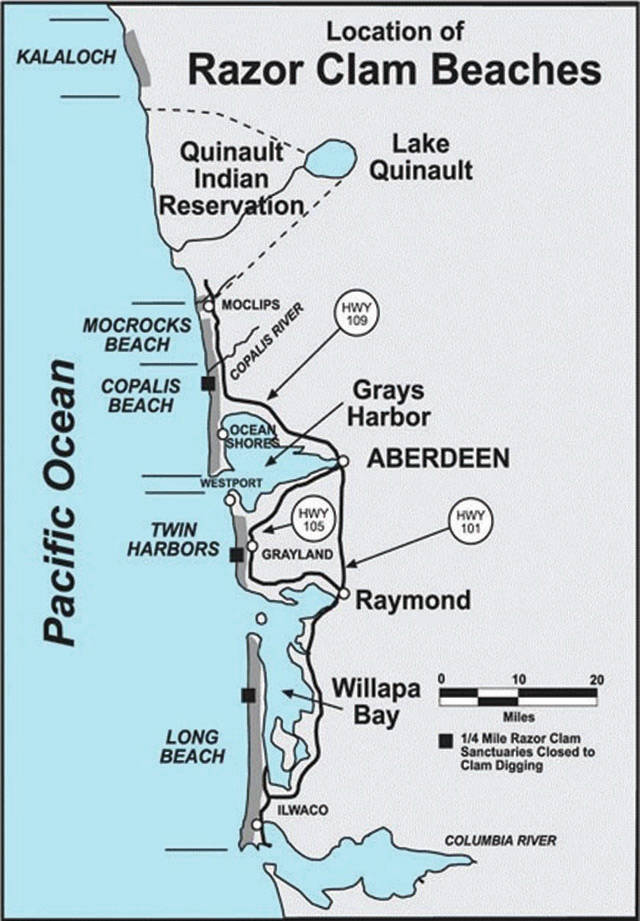The latest marine toxin tests are in and the first razor clam dig of the season starting Friday is a go — with evening minus tides at Copalis and Mocrocks digging areas on the North Beach, and at Long Beach and Twin Harbors to the south.
The Washington Department of Fish and Wildlife has approved evening digs on all four beachs Friday and Saturday after marine toxin tests showed that clams on those beaches are safe to eat, according to coastal shellfish manager Dan Ayres. No digging will be allowed on any beach before noon.
The upcoming dig is approved on the following beaches, dates and evening low tides:
Oct. 6, Friday, 7:49 p.m.; -0.4 feet; Long Beach, Twin Harbors, Copalis, Mocrocks
Oct. 7, Saturday, 8:33 p.m.; -0.7 feet; Long Beach, Twin Harbors, Copalis, Mocrocks
Ayres recommends that diggers hit the beach about an hour or two before low tide for the best results.
“A map on the Washington Department of Health’s website indicates that beaches are closed to razor clam digging up until they are cleared to open by the test results,” Ayres said. “We’re pleased that we are able to move ahead with this opening as scheduled.”
The Washington Department of Fish and Wildlife posts test results online at wdfw.wa.gov/fishing/shellfish/razorclams/current.html.
The state has tentatively scheduled another dig for Nov. 2-5, pending results of future toxin tests. More information on planned digs can be found online at wdfw.wa.gov/fishing/shellfish/razorclams/current.html.
All diggers age 15 or older must have an applicable 2017-18 fishing license to harvest razor clams on any beach. Licenses, ranging from a three-day razor clam license to an annual combination fishing license, are available online at https://fishhunt.dfw.wa.gov and from license vendors around the state.
Under state law, diggers at open beaches can take 15 razor clams per day and are required to keep the first 15 they dig. Each digger’s clams must be kept in a separate container.
Ayres noted that throughout the 2017-18 razor clam season, a research team from the University of Maryland will be out on the beaches seeking volunteers to participate in a survey about razor clam consumption and harvesting practices.



